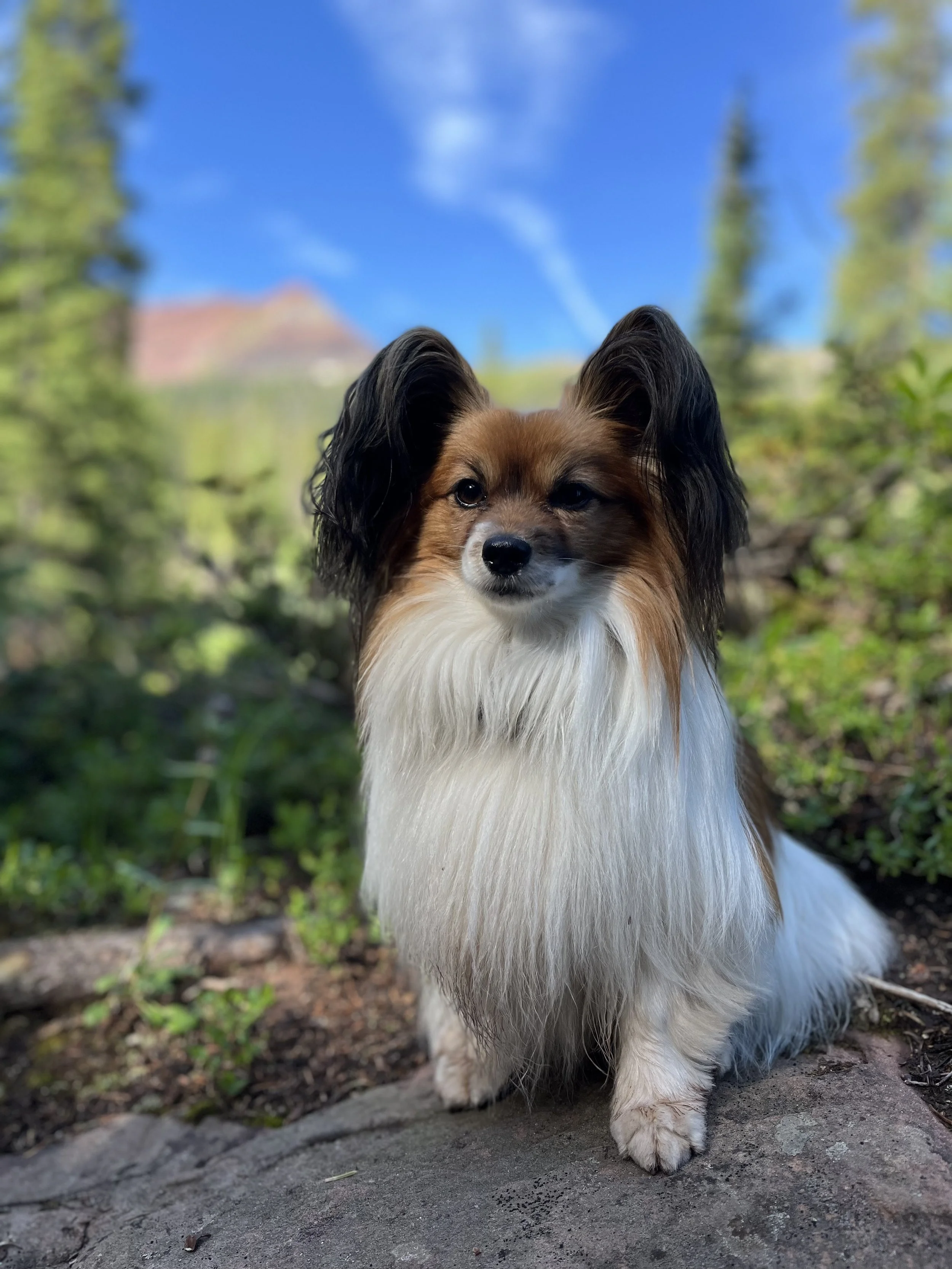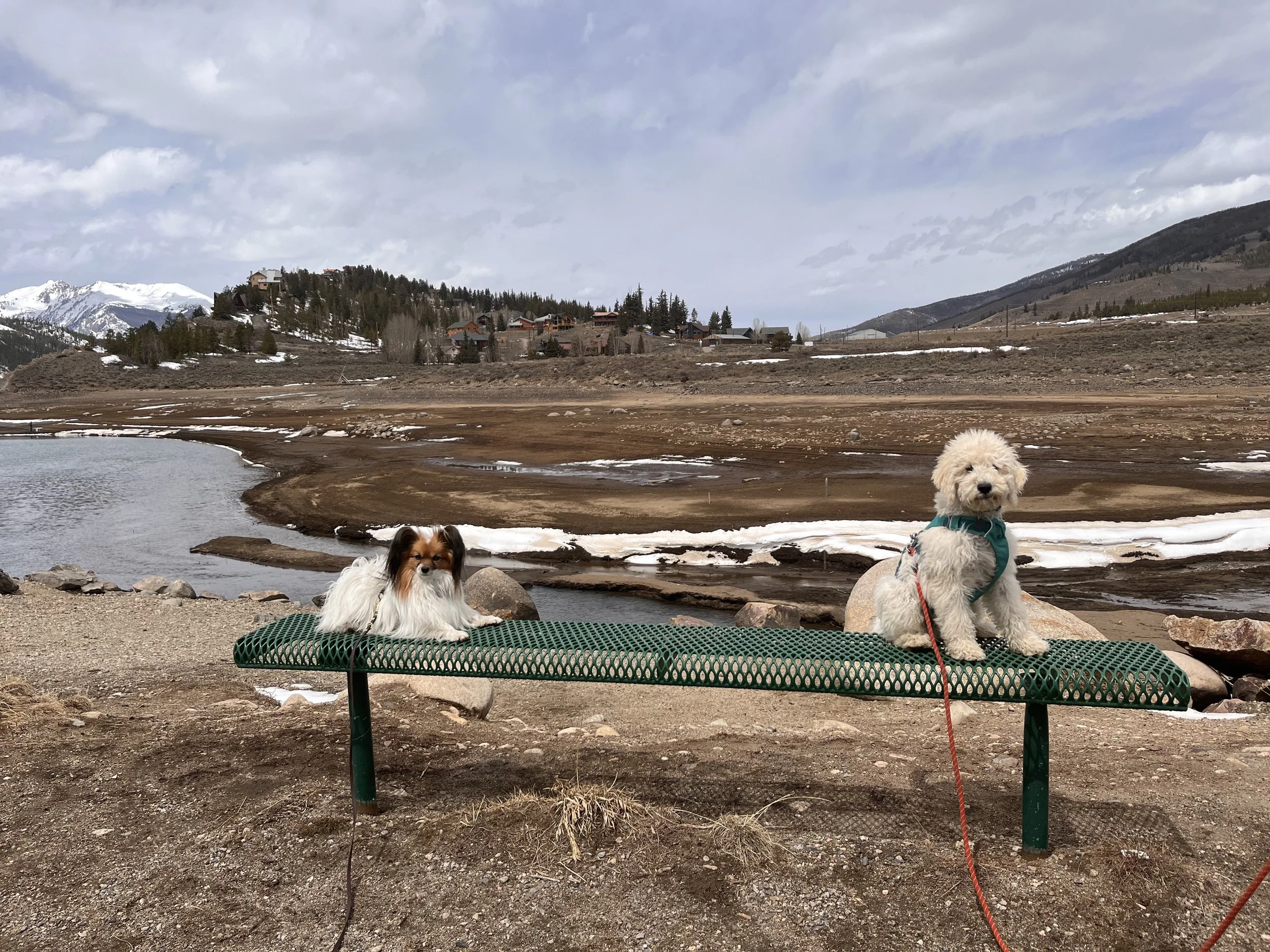Resilience Rainbow Case Study - Osha
By Benah Stiewing
The Resilience Rainbow is a framework developed by Bobbie Bhambree and Dr. Kathy Murphy. Resilience is an animal’s ability to recover after experiencing a stressful event. Bhambree and Dr. Murphy created a system to build a dog’s overall resilience and increase their ability to reach their baseline. To learn more about the Resilience Rainbow, you can click here. In this piece, I am going to cover the application of this concept with one of my dogs, Osha the 2 year-old Border Collie.
Osha is a stable, friendly-neutral, and confident young dog. She was raised with careful attention to neutrality around other dogs because she lives with another Border Collie who is fearful of other dogs. In January 2023, Osha was attacked by another dog. I use the word “attacked” lightly, as there were no injuries and it was a friend’s dog who rushed Osha. We frequently go on group walks with friends and their dogs, and this was one such walk. A new friend was joining us that day, and her dog rushed Osha as soon as she noticed her. Osha started showing appeasement signals (ears back, low tucked tail wag, rolling over to expose her belly) which only escalated (growl deepened, flipped Osha onto her back, snarling with lips curled back into Osha’s neck) the other dog’s behavior. The entire interaction lasted about 8-10 seconds before they were separated. After they were separated, Osha was clearly extremely stressed. After that day, we went on a 2-week break from engaging with any other dogs as she recovered. During and after this initial decompression period, Osha did not show any signs of increased stress around other dogs. She did not develop any reactivity, and continued to practice lovely skills around unfamiliar dogs we encountered out in the world.
However, I had a gut feeling that something was off about Osha. As the weeks and months passed, I could not put my finger on it. By April, I finally had a realization that Osha no longer engaged in play with other dogs. Before the event, she was a moderately playful dog and would engage her dog friends in appropriate play both inside and outside of the home. I began to realize that while she was still neutral and appropriate with other dogs, there seemed to be a lack of joy and excitement. These are anthropomorphizing words, but there is no better way to describe it. She simply didn’t enjoy her interactions with other dogs anymore.
It’s important to state that this is not an odd or abnormal behavior for a mature Border Collie to develop. It’s very normal for a mature Border Collie to become less playful with other dogs, and interested in other activities. I wondered whether the event had simply coincided with a natural development, but I had this sneaking suspicion that it had not. I spoke to my friends who are also professional dog trainers and behavior consultants, and shared my thoughts. We discussed putting Osha on behavioral medication to explore whether the lack of play was natural or not. If a medication helped ease enough anxiety, would she engage in play again, or still be more interested in other pursuits? I ultimately did not use medication with Osha, simply because she started improving before it happened, but it’s definitely something I would have brought on board with the support of our veterinarian.
While I was considering these options, I started intentionally building Osha’s resilience. I had always been extremely particular about the dogs I allowed to interact with Osha, but I began being even more selective. I only had her around other completely neutral dogs who would not invite her to play or engage at all, beyond a friendly sniff. I didn’t want her to practice the behavior of turning down invitations to play, so I exclusively had her around dogs who wouldn’t ask. If another dog was present, my other Border Collie was always away in his crate or left at home. While he can safely co-exist around most dogs, it’s not something he enjoys and I didn’t want her to observe any stress around other dogs, even the most mild. While I make it a regular practice to play with my dogs everyday, I started incorporating new behaviors into our play routine together. Instead of mostly tugging, we would also play chase where Osha would run after me and catch me, and hide and seek where Osha would have to come find me. After our play sessions, we would lie on the ground together while I stroked her legs and feet, taking deep breaths.
After just a few weeks of implementing these changes, Osha engaged a Rhodesian Ridgeback friend in play. It lasted only about 15 seconds, but it was the first time I’d seen her play with another dog in months. A week later, she engaged a Border Collie friend in play, and it lasted a few minutes this time. Within weeks, she was back to her normal self, playing and having a ball with her dog friends. I was thrilled to see her happy around other dogs again. I can’t say for sure what exactly caused this shift in Osha. Perhaps my attempts to increase her security and stability around other dogs helped her feel safe enough to invite play, or maybe this was a natural progression she would have made anyway. However, I do believe that my integration of the Resilience Rainbow framework helped restore Osha’s trust in me to be her advocate and protector, and feel relaxed enough to once again let loose around other dogs.
I am thrilled that Osha has regained her confidence around other dogs, and is once again able to engage in play and enjoy social interactions. However, I am still extremely careful about her interactions with other dogs, and am cognisant that one brief moment of fear and/or conflict could really set her back. Just like human variances in resilience, some dogs can experience an event like the one described above and shake it off (literally and figuratively!), while dogs like Osha may be heavily impacted by a stressful event. Even though Osha’s symptoms of anxiety have shifted, I still take the same precautions to ensure she feels confident, secure, and relaxed around other dogs. I carefully select her canine friends, and structure the experiences to be what she needs to feel comfortable. Knowing that the steps I’ve taken to relieve Osha’s anxiety have been effective, I will continue to do them for the rest of Osha’s life so that - to the best of my ability - I can preserve her confidence and continue to build resiliency.
Summit Dog Training offers group dog training classes & private lessons in Fort Collins, Colorado, as well as online self-study courses & online private lessons for education on how to live the best life with your dog! If you are looking for more training support, please don’t hesitate to contact us! We’d love to help you and your dog get ready for any adventure.














